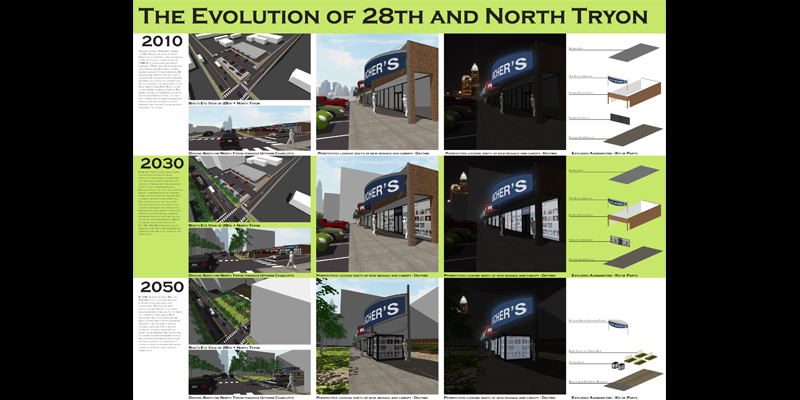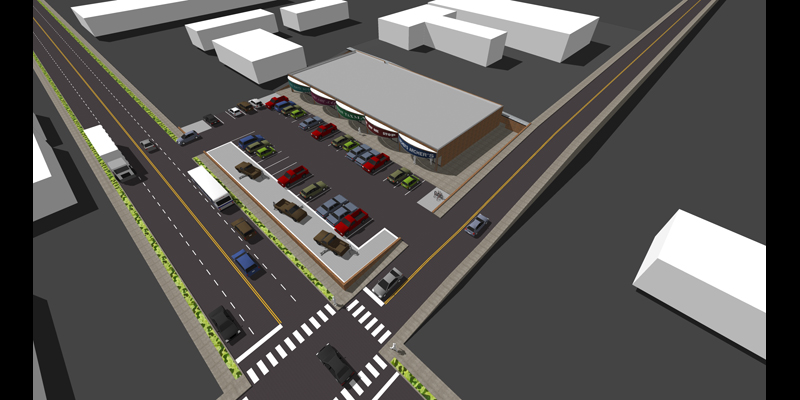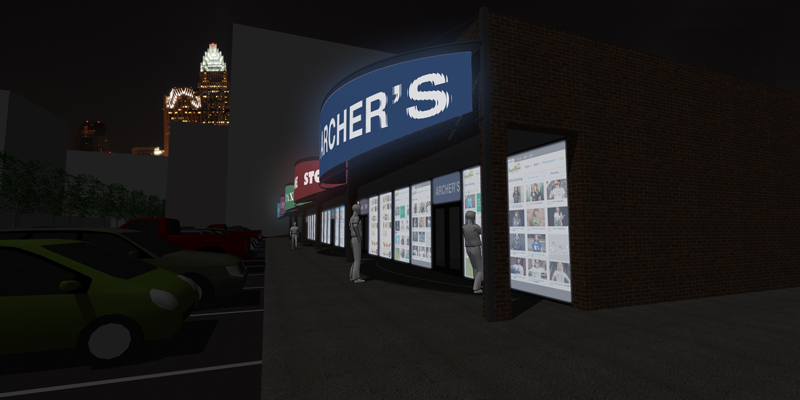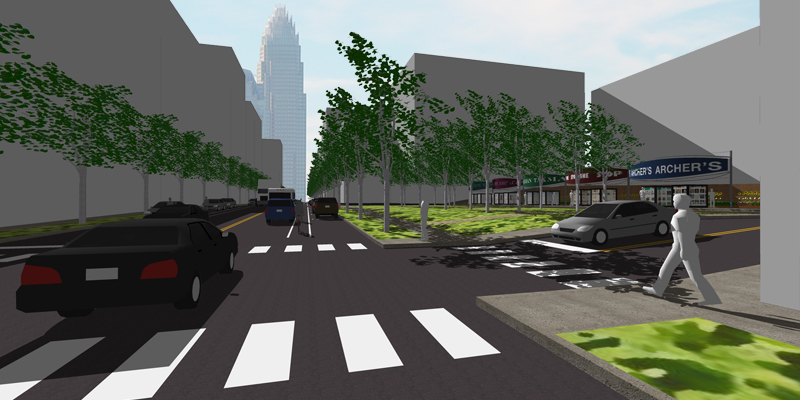

The first phase of the evolution of this shopping center was fairly straightforward and inexpensive. The center is located on a stretch of Tryon Street where small strip malls occupy nearly every other block. There is a ton of signage that competes with each other, and this center had very minimal signage, so larger more legible signs were installed. These signs also increased the covered area outside the entrances to the shops, which was minimal to begin with. The parking lot was also simplified, which allowed for a raised area to be built along the sidewalk where foodcarts could set up next to mobile car detailers, allowing for more business to frequent the center.

The second major phase of the strip mall implemented a center where customers didnt need to enter the store. In a melding of online shopping with traditional retail, digital storefronts allowed customers to see the contents of the store on the displays outside. Customers could window shop and purchase an item, which would be brought to them while they waited.

The final phase of the evolution of the center saw the demolition of the original center. As the area around the center built up, the need for a public park area, necessitated the reconfiguration of the site. The awnings that had originally been installed in the initial phase now shelter vending kiosks, similar to the storefronts in the previous phase, except now the larger goods are delivered to the customer's home after being ordered at the kiosk. The site now offers the same retail services it originally did, but in a much smaller footprint, allowing for a community garden at the back of the site next to the neighborhood and a public gathering space at the front of the site along the thouroughfare into uptown.
